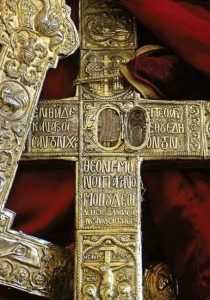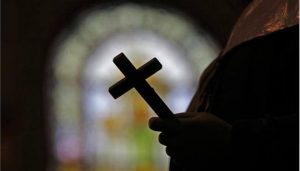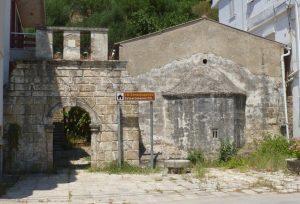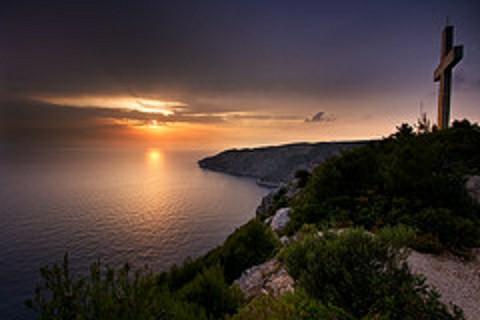In the Christian liturgical calendar, there are several different Feasts of the Cross, all of which commemorate the cross used in the crucifixion of Jesus. While holy Friday is dedicated to the Passion of Christ and the Crucifixion, these days celebrate the cross itself, as the instrument of salvation. The most common day of commemoration is September 14th in Roman Catholicism and Eastern Orthodoxy. In English, it is called The Exaltation of the Holy Cross in the official translation of the Roman Missal, while the 1973 translation called it The Triumph of the Cross.
 In Byzantine liturgical observance, the Universal Exaltation (also called Elevation in Greek Churches) of the Precious and Life-creating Cross commemorates both the finding of the True Cross in 326 and its recovery from the Persians in 628, and is one of the Twelve Great Feasts of the church year.
In Byzantine liturgical observance, the Universal Exaltation (also called Elevation in Greek Churches) of the Precious and Life-creating Cross commemorates both the finding of the True Cross in 326 and its recovery from the Persians in 628, and is one of the Twelve Great Feasts of the church year.
September 14th is always a day of fasting and eating meat, dairy products and fish is prohibited. The Feast of the Exaltation has a one-day fore feast and an eight-day after feast. The Saturday and Sunday before and after September 14th are also commemorated with special Epistle and Gospel readings about the Cross at the Divine Liturgy.

On the eve of the feast small vespers read by the priest, having prepared a tray with the cross placed on a bed of fresh basil leaves or flowers, covered with an aër (liturgical veil), places it on the table of prosthesis; after that service, the priest carries the tray on his head preceded by lit candles and the deacon incensing the cross, processes to the holy table (altar), in the centre lays the tray, in the place of the Gospel Book, the latter being set upright at the back of the altar. Those portions of the vespers and matins which in sundry local customs take place before the Icon of the Feast, instead take place in front of the Holy Table. The bringing out of the cross and the exaltation ceremony occur at matins. The cross remains in the centre of the temple throughout the after feast, and the faithful venerate it whenever they enter or leave the church. Finally, on the leave-taking (apodosis) of the feast, the priest and deacon will incense around the cross, there will be a final veneration of the cross, and then they will solemnly bring the cross back into the sanctuary through the Holy Doors. This same pattern of bringing out the cross, veneration, and returning the cross at the end of the celebration is repeated at a number of the lesser times.
Zakynthian Traditions.

Tonight the faithful will be soaking their broad beans in water ready for tomorrow’s meal. Since fasting is practiced the beans will be boiled up tomorrow and served with vinegar and oregano will be sprinkled upon them. Grapes are also served on this day.

Another tradition is that women will take a bunch of basil to the church and during the service it will be blessed. For those who haven’t taken their basil, the church willingly hands out the sacred herb. It is then taken home and homemade bread is prepared. You may ask why the basil? As I have mentioned before, many of our traditions are tied into Christianity. This story is no different. Basil was the herb Helena stepped on whilst looking for the sacred cross. The beautiful aroma of the plant helped her to find the life giving Cross.

The church at Kryoneri, the “Estavromenos”, will be celebrating today and tomorrow. Named after the Crucified himself the church always celebrated this day in glory centuries ago.

Another village church that is always a pleasure to visit is the churhc of Saint Nicholaos of Ambelokipi, a church rich in history and full of traditions. The service will start at 08.30a.m. To find the church please clip on th emap link here → Agios Nikolaos of Ambelokipi
To get up-to-date news or more information about Zakynthos, join our Facebook group or follow our Twitterfeed. All articles on this blog are the property of the authors and The Zakynthos Informer. No articles are to be reproduced, copied or screenshot without the permission of the author.
 Zakynthos Informer Zakynthos Informer
Zakynthos Informer Zakynthos Informer





